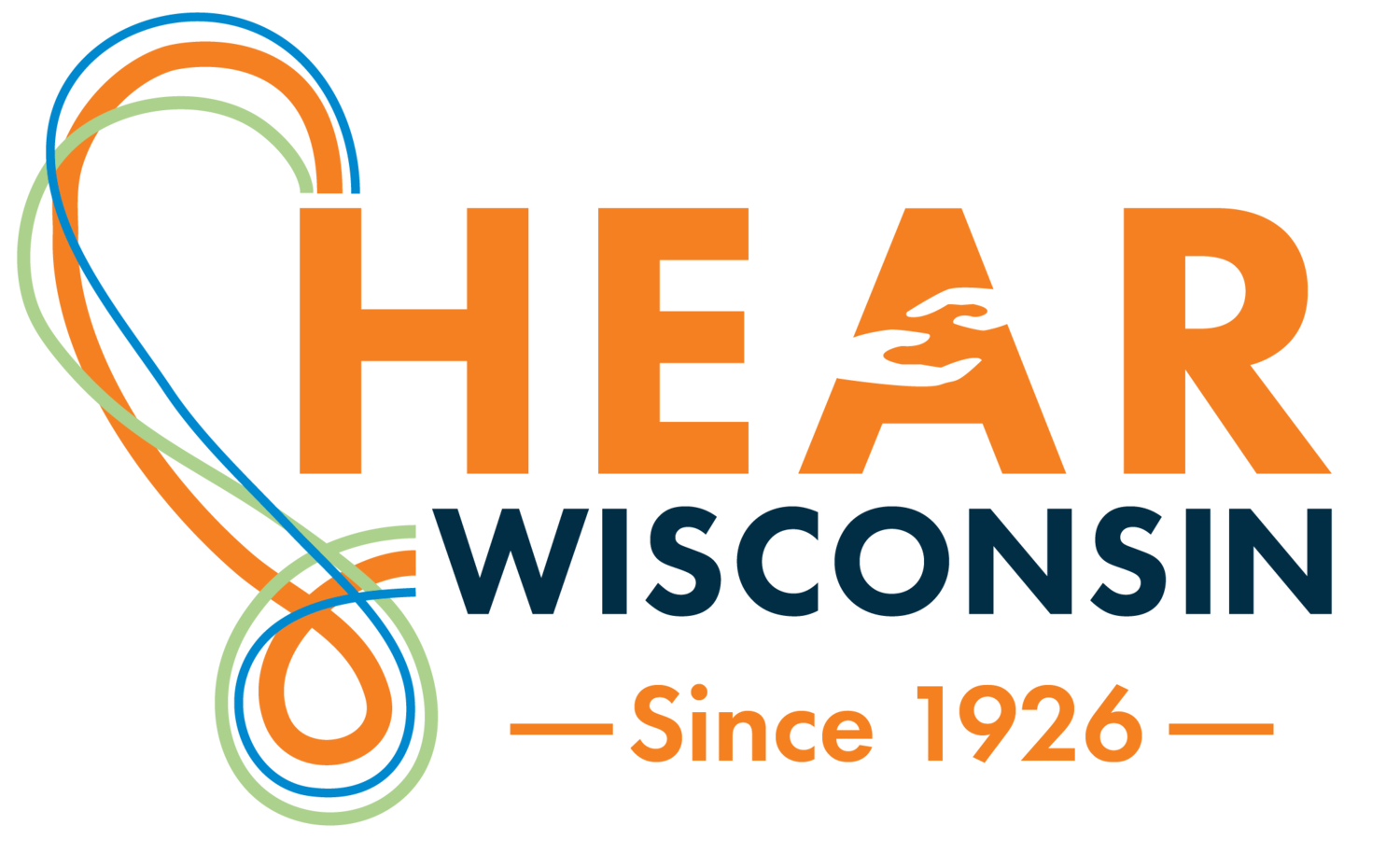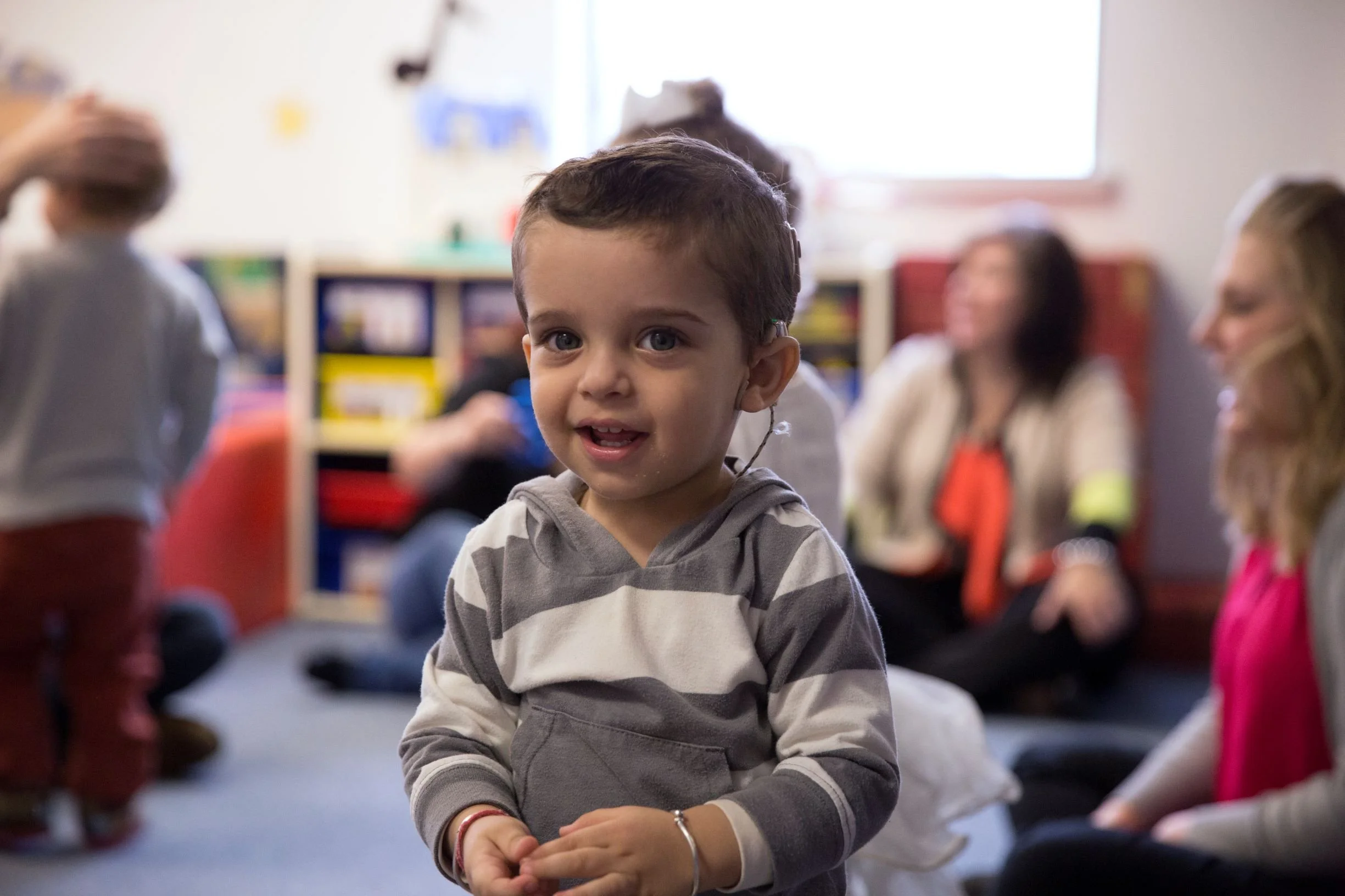Hearing is a foundation for learning and brain growth!
Babies can hear in utero and their brains start
to recognize sound even before they are born.
Hearing loss is about getting input to your
child’s brain for language, communication and learning.
Communication Choice
HEAR Wisconsin respects families’ right to informed choice regarding language and communication. We are committed to providing unbiased information and a variety of communication choices to help your child reach his or her fullest potential.
American Sign Language
Independent of the choice to use a spoken language or a visual language, understanding a child’s hearing status is important.
-
• Reacts to loud sounds with startle
• Moves eyes in response to sound at typical loudness levels at close distance
• Pays attention to music
• Seems to recognize parent’s voice
• Will quiet to parent’s voice if crying
• Responds to voices by babbling
Sources:
- ASHA - Click to find more information for Birth to One Year
-
• Turns to the direction of sound
• Recognizes common words like “book”, “juice” and non-speech sounds like common animal sounds (woof-woof, meow)
• Responds to simple requests without gestures (wave bye-bye)
• Imitates some speech sounds and non- speech sounds (lip raspberries)
• Independently says 1-5 words by age 1 year
- ASHA - Click to find more information for Birth to One Year
-
• Understands simple questions and directions
Ex. Where’s your shoe? Roll the ball.
• Enjoys listening to simple songs, rhymes and stories
• Points to pictures in books when named
• Says more words every month
• Uses many different consonant sounds at the beginning of words
- ASHA - Click to find more information for one to two years
-
• follows two-step requests (“Get the book and put it on the table”)
• enjoys hearing stories for longer periods of time
• puts two or three words together to talk about and ask for things.
• speech is understood by familiar listeners most of the time
• often asks for or directs attention to objects by naming them
- ASHA - Click to find more information for two to three years
-
• Hears you when you call from another room
• Answers simple questions
Ex. “who?”, “what?”, “where?”, and “why?”
• Able to retell a simple story
• Identifies objects by description (Ex. What animal barks?)
• People outside of the family usually understand child’s speech
• Uses a lot of sentences that have 4 or more words
- ASHA - Click to find more information for three to four years
-
• Pays attention to a short story and answers simple questions about them
• Uses sentences that give lots of details
Ex. “The biggest peach is mine”
• Says most speech sounds correctly
• Says rhyming words
• Uses the same grammar as the rest of the family
- ASHA - Click to find more information for four to five years
To learn more about hearing in young children:
Talk to your pediatrician or a pediatric audiologist about getting your child’s hearing evaluated as soon as you notice any concern.
If you have a child with hearing loss or are the parent of a CODA and have questions - Contact HEAR Wisconsin. We are here to help.







